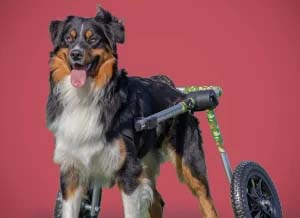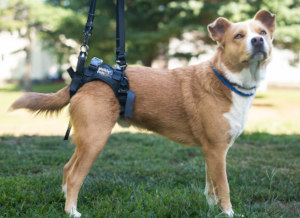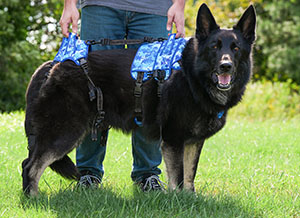- November 24, 2023
Recognizing the Effects of Poor Air Quality on Pets

As a pet parent, you have a lot of oversight about what your furry friends eat, drink and play with throughout the day. However, some things are less in your control. For example, the air quality in your area could be subpar or detrimental to human and pet health. What can you do in this situation? How does poor air quality affect your pets? Here’s a guide on air quality and what you can do in your home.
How Does Air Quality Affect Pets?
Poor air quality can stem from numerous reasons, including wildfires, smog and poor environmental practices. How does it affect your pets? These three effects demonstrate why you should be aware of pollutants in your area.
Increasing the Risk for Illnesses
The first liability for pets is increasing their risk of illnesses. Like humans, your pets are susceptible to pulmonary issues if compromised air enters their bodies. Inhaling bad air can cause devastating long-term effects if you’re not careful.
A 2020 Veterinary Medicine and Science article examined the association between indoor air pollution (IAP) and bronchial and lung diseases in dogs and cats. While there’s no correlation between IAP and severe clinical signs, the researchers found a positive association between hypercellular response and poor indoor air quality (IAQ).
Altering Gut Composition
While pollutants directly affect pulmonary health in animals, there are other parts of the body you should be vigilant of. For example, watch your pets’ gut health if your area experiences pollution and bad air quality.
A 2020 Environment International study finds air pollution leads to less microbial diversity in an animal’s microbiome. Your pet’s microbiome is essential for fighting diseases and digesting the food you give them. The study particularly notes zone (O3) negatively affects air quality and animal health.
Intensifying Illnesses
While it’s clear poor air negatively affects your pet’s long-term health, it can also impact their quality of life in the short term. If your pet has illnesses like asthma, the poor air quality will only intensify them and make matters worse.
For example, pets with asthma will have a more challenging time when the air quality decreases because the disease makes it harder for them to breathe due to tightened airways. The poor air quality can also lead to asthma and bronchial issues, even if your pet didn’t previously have them.
How Can You Ensure Your Pets’ Safety Outdoors?
Protecting your animals living outside is critical because they’re directly susceptible to pollution when air quality declines. Use these three tips to ensure your pet’s safety outdoors.
1. Timing It Right
Many owners let their pets outside to use the bathroom, get fresh air and play around. Experts recommend about an hour of daily exercise for your pets to ensure they get their necessary physical activity.
However, it’s important to time it right. If your area experiences poor air quality, aim to take your pets outside when it’s safest. The air quality will most likely be at its best in the morning, but you should check local reports to inspect current levels. Experts say acceptable air quality is under 35 micrograms per cubic meter (µg/m3). However, 50µg/m3 and up means you should keep your pets inside.
2. Walking, Not Running
If you must take your pets outside, keeping them on a leash is critical to ensure they walk, not run. Running around the yard at high speeds may be tempting for your furry friends, but it could come at the detriment of their health. Your pet’s lung capacity isn’t as pronounced as humans’, so they need to take it easy. Intense activity leads to your pets breathing harder, which isn’t conducive when the air quality is poor.
3. Changing Their Food and Water
Fresh food and water are essential for your pets’ healthy living. In fact, they may let you know when these resources aren’t up to par. When the air quality has deteriorated, changing the food and water bowls becomes even more critical.
Ensure your pets always have fresh water if they must stay outside for a while because pollutants can compromise it. Some pets may have illnesses requiring increased water consumption, so having readily available water is vital.
How Can You Ensure Your Pets’ Safety Indoors?
Some pets are thrilled to live an indoor life. Staying inside increases protection from dirty air, but they can remain vulnerable if you don’t take the proper precautions. Follow these three tips for pets predominantly staying indoors.
1. Sealing Windows and Doors
Being inside protects you from poor air quality, but your home could compromise your pets if it has cracks and holes around the structure. These crevices allow circulated air to escape and poor air to enter your home, so tending to these issues is critical. Inspect your windows and doors for air leaks and use caulk to seal leaks wherever possible.
2. Using Air Purifiers
Your pets deserve the best, so consider using air purifiers to enhance the air quality of your home. These devices filter the air in whatever room they’re in and send purified air back each hour. Check the air purifiers you’re considering for O3 because of its harmful effects on pets. High-efficiency particulate air (HEPA) filters are a solid choice for your home.
3. Reducing Chemical Exposure
Poor air quality can come from places you might not expect. Some household items and fixtures increase chemical exposure even though you’re trying to tidy up. Many cleaners on the market contain volatile organic compounds (VOCs) harming human and pet health. All-purpose cleaners, air fresheners and other substances can cause cancer in animals and irritate noses and eyes.
Instead, opt for low-VOC or all-natural cleaning products. You can get these products from stores or make them yourself at home. Regardless, they’re a better option for you and your pets.
Proudly Protecting Your Pets
As a pet owner, you’re proud to give your furry friends the best home possible. Factors like outdoor air quality may be out of your control, but you can protect your pets indoors and outdoors with these strategies.
If local air quality deteriorates, watch your pets extra carefully to ensure they don’t exhibit symptoms. Some warning signs you should watch for include wheezing, sneezing and breathing difficulties. If they seem out of the ordinary, consider contacting a veterinarian to diagnose the issue. When in doubt, keep your pets indoors and away from areas with poor air quality.
Related Articles:
Tags
What do you think?
Related Articles

New Puppy Checklist: Gear You’ll Need for Your New Dog
Getting a new puppy is really exciting, but before you welcome them home, it’s important to prepare your space for them. Since puppies need a

How Big Do Mini Poodles Get? Vet Reviewed Average Weight & Growth Chart – Dogster
The information is current and up-to-date in accordance with the latest veterinarian research. Learn more » When you buy a Miniature Poodle, you might not

Can Police Dogs Smell Nicotine? Vet Verified Facts & Info – Dogster
The information is current and up-to-date in accordance with the latest veterinarian research. Learn more » While cigarette sales have been declining steadily for decades,

How Old Is 5 in Dog Years? Vet-Approved Guide to Each Size of Dog – Dogster
The information is current and up-to-date in accordance with the latest veterinarian research. Learn more » A common method for calculating a dog’s age is




